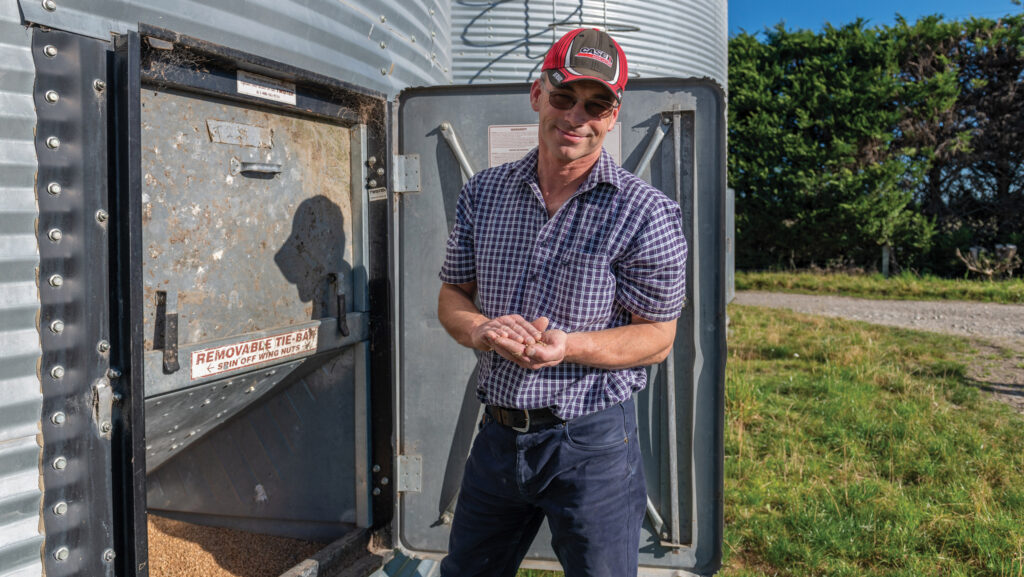Farmer Focus: Throwing it all at our fight against grassweeds
 David Clark © Emmily Harmer
David Clark © Emmily Harmer Our farming system revolves around ryegrass seed production for four key reasons: successful yields, straw sales to North Island dairy farmers, the restorative function within our rotation and the lambs we can finish.
For this to work we need to be able to reliably deliver a 99% purity on seed tests, with a four-year return period within our rotation.
Annual ryegrass contamination, particularly herbicide resistant types, are now viewed as an existential threat to our current farming system.
See also: Advice on managing blackgrass with wetter, milder winters
I was fortunate to attend the International Herbage Seed Conference in Oregon, back in 2019.
The key focus of the lectures and field trips was herbicide resistance in ryegrass seed crops, which in their system is multi-year crops and ryegrass to ryegrass resowing.
While I was somewhat dismissive of the threat due to our multi-species rotations versus their mono-crop system, the key take home was that there was no significant new chemistry on the horizon.
This meant we had to firstly not let the problem establish and secondly, use our available chemistry very carefully.
A very critical look upon returning home showed we had no room for complacency, and we identified isolated populations within the farm.
The first major risk was contaminated machines, particularly balers, coming on farm, which prompted us to purchase our own baler.
This was followed by a windrower to ensure no harvest equipment comes onto the farm.
We use a plough strategically within our rotation, so I hope our cultivation methods are robust.
The autumn wheat is planted. For the past two years we have gone back to using Avadex (tri-allate) pre-emergence with great success, our logic being that this older chemistry could pre-date resistance development.
Firebird (flufenacet + diflufencan) has been applied pre-emergence and we will now follow up with terbuthylazine and isoproturon.
If the kitchen sink would help, we might also throw that out of the back of the sprayer.


